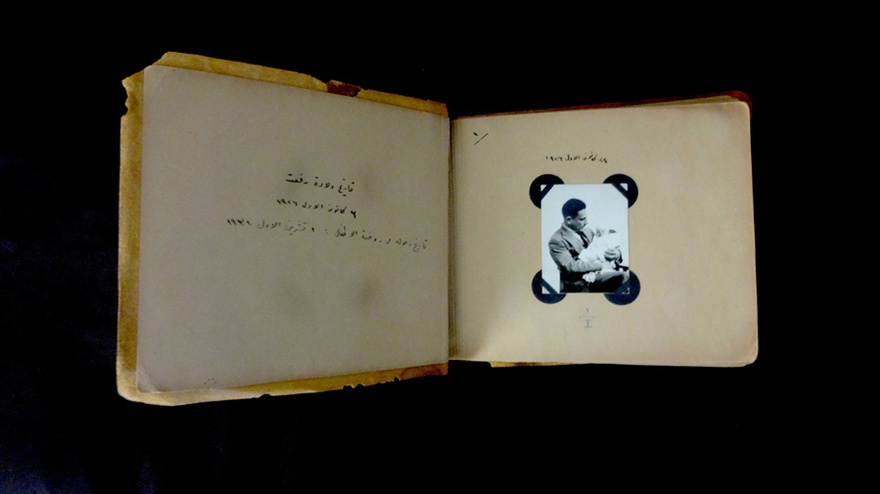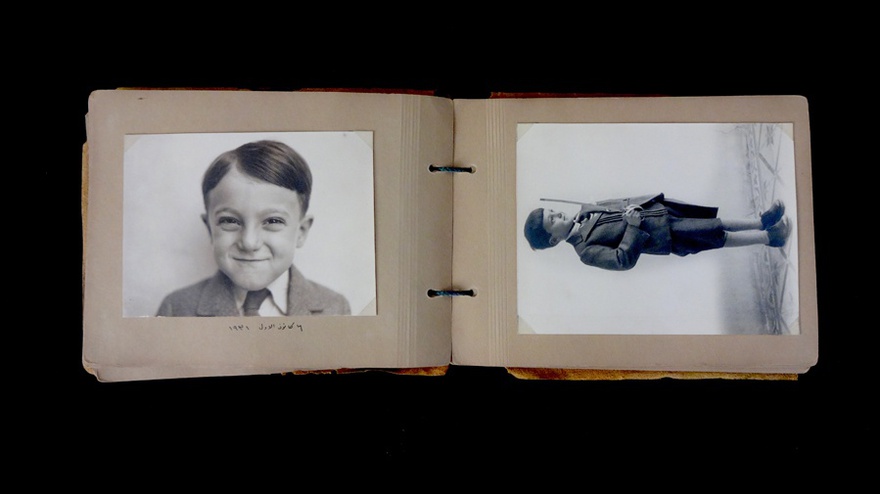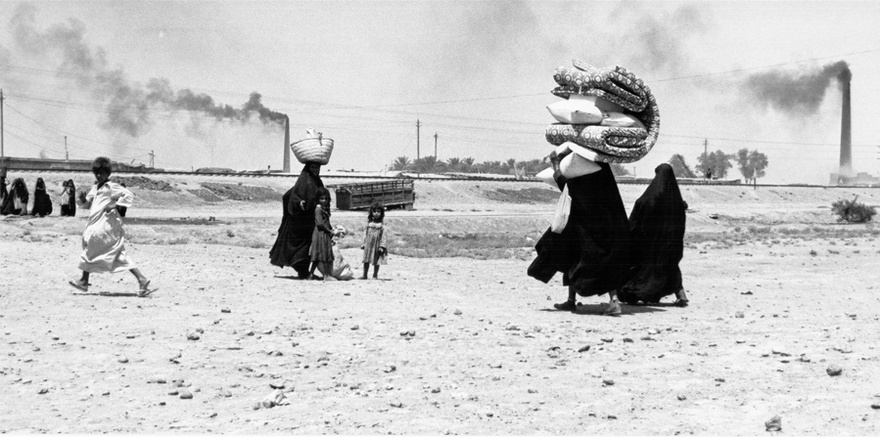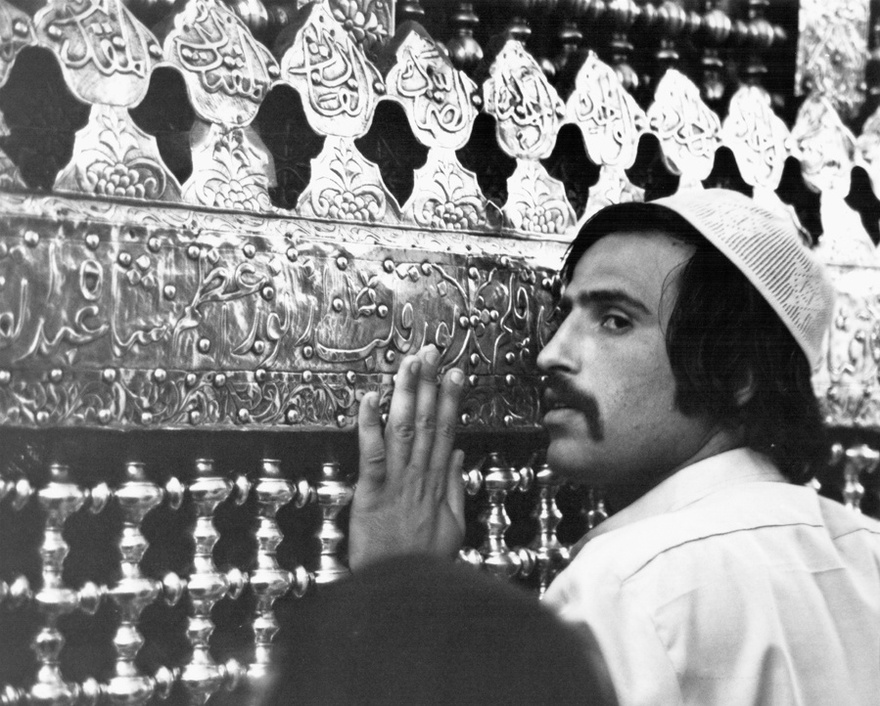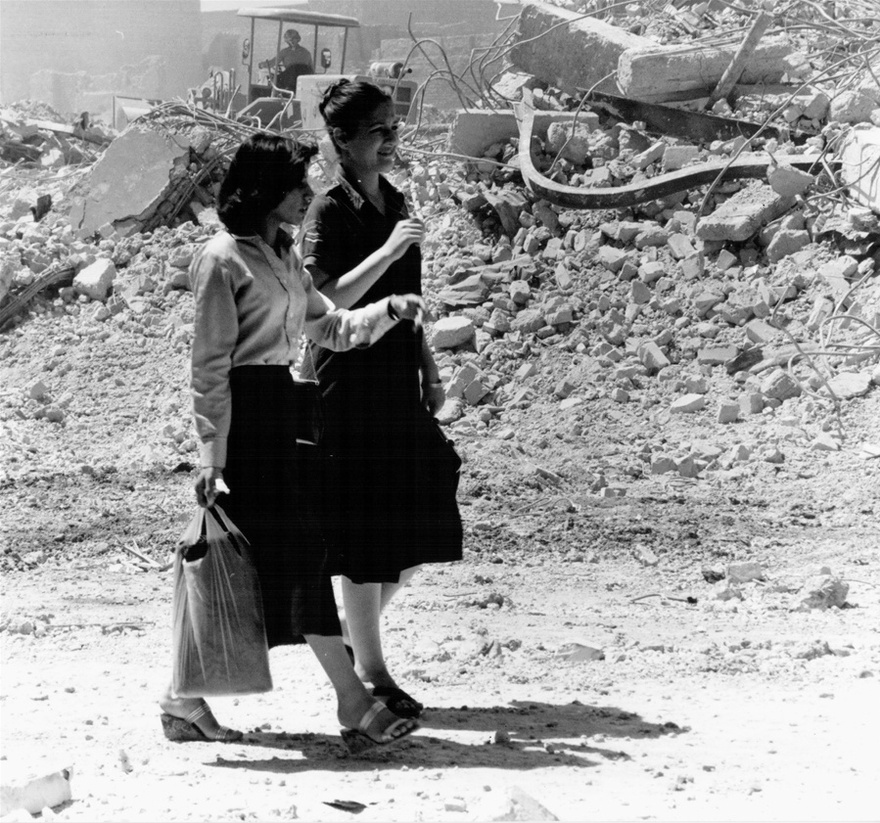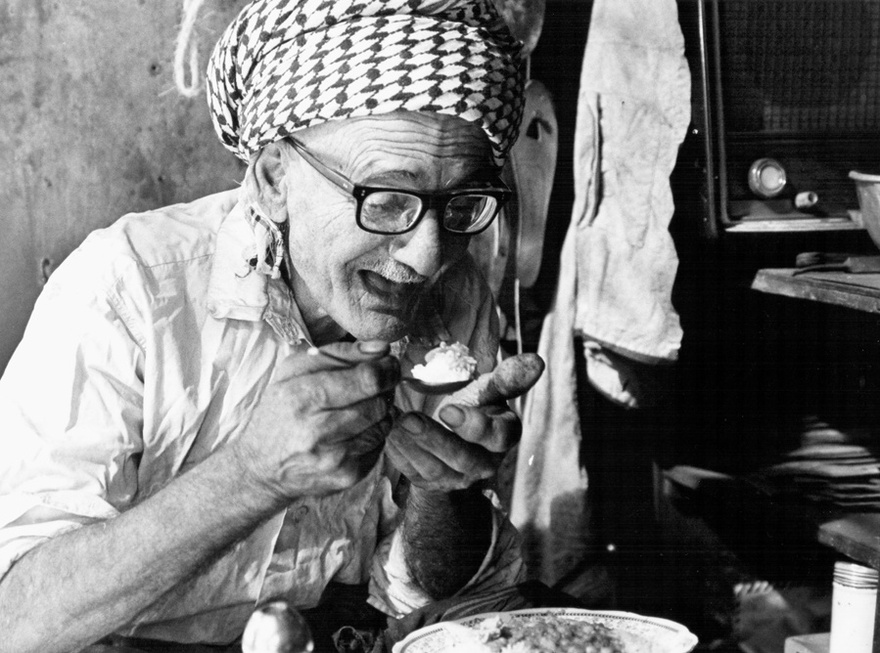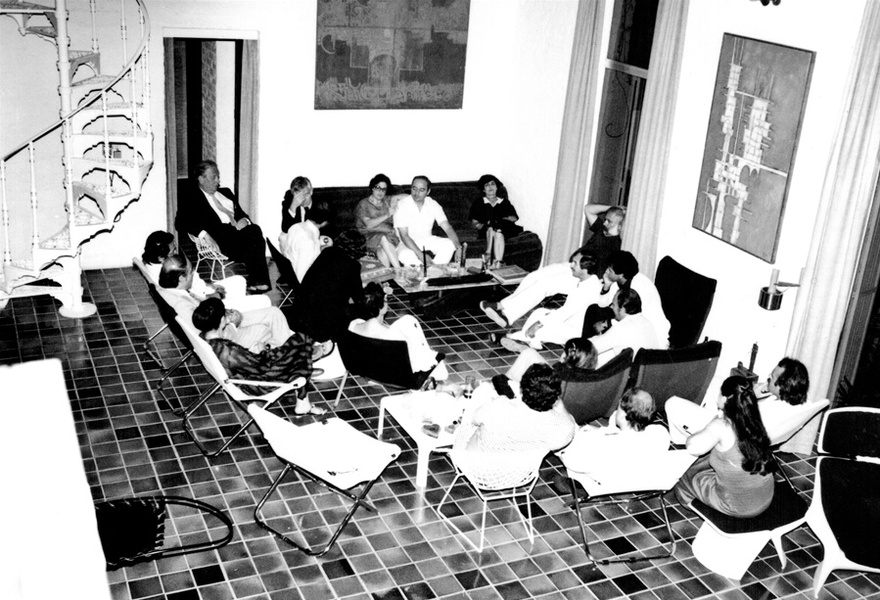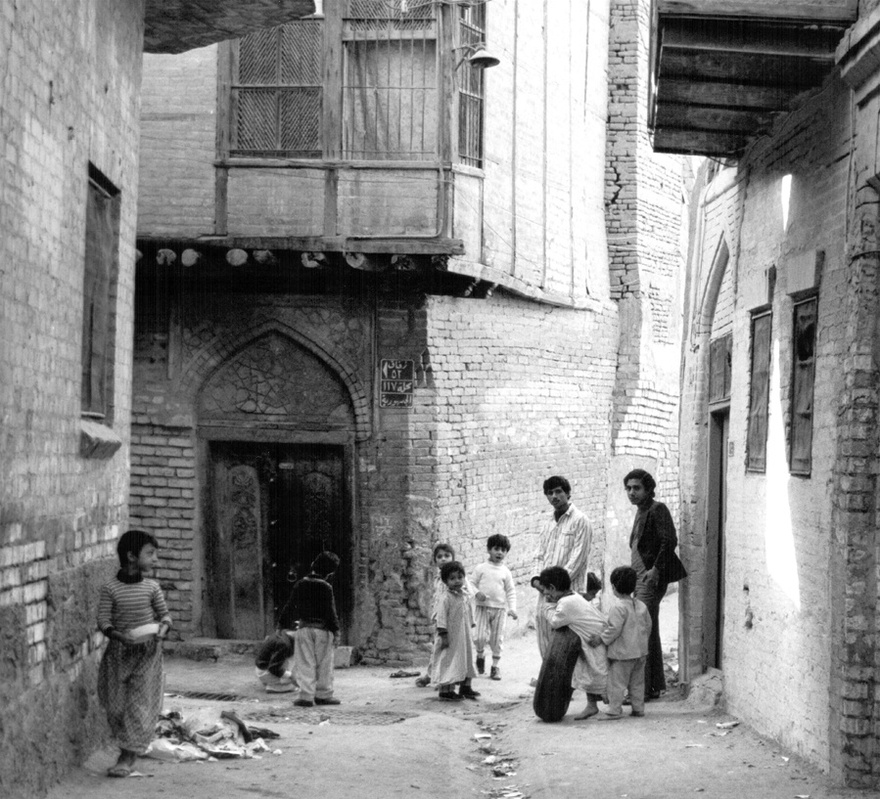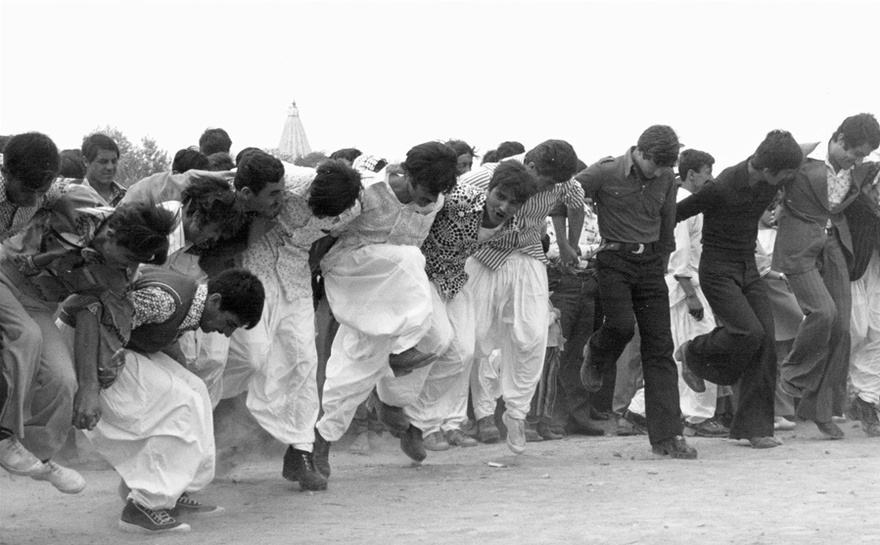Interviews
Capturing Evanescence
Rifat Chadirji and Balkis Sharara in conversation with Amin Alsaden
It is little known that Rifat Chadirji, one of the Middle East's most prominent modern architects, produced what could very well be the most comprehensive visual record of Iraq in the second half of the twentieth century. His photographic collection was amassed over several decades, and covers various aspects of life in Iraq, from rituals, crafts, and spaces, to aspects of Chadirji's design work from 1952 to 1978, not to mention his travels around the world, his family, and social life. In collaboration with the Arab Image Foundation in Beirut, which currently holds Chadirji's photographic collection, Amin Alsaden worked with Chadirji and his wife Balkis Sharara, a writer and key participant in Baghdad's vibrant cultural scene in the 1950s and 1960s, on annotating these photographs for the first time over an intense couple of weeks. It was an opportunity for Chadirji, who celebrates his 90th birthday this December, to have a comprehensive overview not only of his life but also of the Iraq he captured. At the conclusion of this project, Alsaden had the following conversation with Chadirji and Sharara.
Amin Alsaden: We went through over fourteen hundred contact sheets, representing thousands of your photographs – only a fraction of your collection, which also includes hundreds of images documenting your architectural works. You shot mostly in the 1970s and 1980s, but the collection also contains some images from the 1950s and 1960s. What compelled you to take so many photographs?
Rifat Chadirji: I felt that many things were disappearing, and I wanted to document them before they did. This is what motivated me to create a sort of archive of these things.
AA: Ms Sharara surprised us, just before we started this conversation, by bringing an incredible little album put together by your father, in which he meticulously documented your childhood.
RC: I thought we lost this album, as I have not seen it in years.
Balkis Sharara: I kept it safe with our personal albums. Rifat's father, Kamil Chadirji, gave me this album over 60 years ago as a wedding gift. He entrusted me with keeping it safe.
RC: This album was my first exposure to visual documentation. My father always showed it to me as I was growing up. He used to take a lot of photographs, and I used to accompany him when he went around Iraq capturing the developments taking place around the country.
AA: Ms Sharara, you witnessed many of the trips that your husband documented, as well as the social gatherings.
BS: Rifat has been taking photographs ever since I knew him. He had a collection before we were married. It has always been part of his life. His father obviously had a great influence, and Rifat grew up in a household that encouraged him to take photographs. But he only started documenting regularly from the 1970s onward.
AA: You have published some of your father's photographs. I have always wondered what got him, Kamil Chadirji the politician, into photography, especially during those years when it must have been technically challenging to take and develop photographs.
RC: His early cameras were the large type that required a particular kind of knowledge in order to operate. He had a bunch of books in his library on how to use a camera. He had several cameras, some of which were the old bulky kind, in which he had to stick his head under a leather cover. Then the new cameras became available, and he bought a small Contax. He developed his own photographs in a dark room at our house.
No one in our family, or our friends, had a camera back then. My father was the only one with a camera, going around Baghdad and the rest of Iraq, photographing markets, crafts, and other things. It used to be a hobby that he enjoyed on his own, as his politician friends did not share the same interest. He bought me a small camera when I was in primary school. He guided me through the process and taught me how to take good photographs.
BS: Rifat had an important camera in the 1950s, with very large lenses. You could buy a Volkswagen car for the price of that camera back then. Our car was worth 500 Iraqi dinars around 1955. He bought a camera that cost us 500 dinars. It was a professional camera, a Nikon. He was always our designated photographer, which is why you hardly see him in pictures. He was behind the camera.
AA: And you learned to develop your own photographs as well?
RC: No, I used to send them to Hasso Bros. They were an old Christian family who opened this large store in Baghdad. My father used to go there every week because he wanted to check out all the new gadgets: the cameras they sold, tools, and stationary. I am not sure what happened to the photographs I created back then.
Later on, I used to send my films to Beirut, and I would receive them a couple of days later. But some films went missing in the process. As for more important and more challenging film rolls, such as images taken at night, or colour photography, I used to send them to Germany, and they always did a great job.
AA: But it seems that you did not make a conscious effort to share these photographs with a wider public. You used some of them in the books you have published to date, but there is nothing dedicated to your photography – a book that would showcase your collection, for example.
BS: That is true. We never saw these photographs, partly because Rifat kept them at his office. He would just develop the films and print contact sheets, and keep collecting them at the office. It was a different case with personal or social photographs – Rifat used to print some of these and share them with our friends and family. I saw the whole collection for the first time when we moved to London.
We have been working on a project to publish a representative group of photographs, at least one hundred, in one book. It will focus on social life in Iraq during the decades captured by the collection. But it is a big project, and we are thinking about a good publisher who could do justice to the quality of the photographs.
RC: I was not photographing with something like that in mind. I did it for myself back then. You see I always had this sense of history. My father had a sense of history too, in that he never believed things came from thin air, or that some god created them. He took everything he looked at and tried to understand its history and how it developed. He had an anthropological eye: he would try to trace everything he observed back to its origins. So we photographed as a way of observing and documenting things. And we did it for ourselves, because none of our friends were necessarily interested in this activity.
Other than documentation, photography was a source of pleasure for me. When I saw something and I clicked, that produced an indescribable pleasure.
AA: Was this pleasure induced by the aesthetic qualities of what you photographed, or was it the pleasure of collecting?
RC: It was both. Collecting is certainly pleasurable, but photography by itself was a pleasure. Just like food is enjoyed for its own sake, but it simultaneously has a practical benefit.
AA: Did you not take pleasure in photography in the 1950s and 60s? You did not take many images back then.
RC: I was not consistent. I would photograph intensively for three years, and then I would stop for four years, and I would not touch the camera during that period. Then I would go back to it, and then stop. Why I did that, I am not really sure. When I abandoned photography, it would be to the extent that I was not able to even touch the camera. At times, I was simply not interested.
AA: Then in the 1970s, you came back to photography with a vengeance. We saw hundreds of films from that period, starting in 1974.
RC: Yes, and I am not sure why. But at that point, I started dedicating an entire day each week to photography. I had my driver with me, even when I went to other cities. For example, when I travelled to Mosul or Basra, I would fly, and my driver would meet me there. He took me around and I photographed these cities.
At that point, I started reading many books, particularly on anthropology, and they influenced my life and thinking profoundly, and formed a base for my later research and writing. Some of these included Primitive Culture and Anthropology by Edward Burnett Tylor, The Origin of the Family by Friedrich Engels, and What Happened in History by V. Gordon Childe. I developed a keen awareness of how things always went back to some origin. This made me observe the reality of things in Iraq more closely.
AA: But in Iraq, it was never easy to take photographs – it has always been prohibited for one reason or another. How did you manage to take thousands of photographs, particularly at such critical times in the country's history?
RC: The first thing I did was to get a permit from the Mayoralty of Baghdad. Once I had that paper, I went to the Ministry of Interior, and they gave me another one. With these two in hand, I went to the Department of Religious Endowments, and they immediately gave me a third one. Once I had these three permits, I headed to the Ministry of Defense, and got their approval. Do not forget that my name often facilitated my mission: it was clear that I was not a spy, but a keen young man interested in photography. Because of my father's reputation I was received at a very young age by directors of various departments, so we had a lot of connections. For example, I used to visit Taha Al-Hashimi, the Iraqi army's Chief of Staff, and I used to spend a long time at his office. Our name helped a lot.
It was also known that I did not have any political affiliations, even though some people believed I was a Communist. But that was only when I returned to Baghdad from England in 1952, when I was imprisoned briefly based on false claims. The famous lawyer Hussain Jamil, who was a close friend of my father, volunteered to defend me, and I was released. When I took photographs, it was known that I was not involved with politics – that I was neutral.
AA: If these permits ensured that no one from the government would bother you, how about society, how did you deal with Iraqis' aversion to photography? We know that in addition to the official ban, there seems to be some sort of self-censorship, and many people might not approve of others taking their photographs.
BS: There is a rejection of the camera in most of the so-called Third World, something we experienced in our travels as well. They think of it as a device of spying. People were also simply not used to someone with a camera taking photographs; that just did not exist.
RC: That is correct. And I was not always left alone. One day, I was out with my friend Dr Ali Kamal, taking photographs at Al-Sa'doun Park. It was Eid, and a Friday. Members of the secret police questioned us, and I had to go back to the car and get the permits to show them. They called the intelligence service to check whether my permits were authentic. But it was a holiday, and their director was not there, so we were held for a while until he returned to the office.
But again, the name helped. I remember that I was once walking in Al-Karkh area with someone from the Mayoralty. He pointed to a house and told me that 'bad' people lived there. I asked him to clarify, and he said they were prostitutes. I entered the house, introduced myself, and they allowed me to take pictures of their daughter. They thanked me, we said our goodbyes, and I left. They probably accepted me because of my name.
AA: So you introduced yourself everywhere you went?
RC: Of course, otherwise people might not have allowed me to take their photographs. But I did not introduce myself on the street, where you had to deal with situations as they arose. For example, when it came to children, some would tell me that I could not take photographs, that it was prohibited. I used to be assertive, and tell them it was none of their business, and then they would leave me alone. At other times, I would encounter groups. If I treated them aggressively, they would become vicious. But they were always excited when they were photographed. I did not always want to take their picture, but I often did because it meant avoiding trouble and facilitating my mission. When I arrived in a place, I would ask the children: who is your leader? Someone always stepped forward claiming to be the leader. He would become my guide, because I gave him prominence as a leader. He would organize the group and get the children to behave, and they would turn into an army following me around and protecting me. I would take a photograph of the whole group at the beginning, which made them very happy, and they would leave me in peace.
One day, I visited Erbil, and a member of the secret police accompanied me when I went out to take photographs. We arrived at an open square, where some children saw me and said that it was prohibited to take photographs. The policeman used foul language with them. They started throwing stones at him, and he threw stones back, and they engaged in a battle for a while. I left them behind and I went around to take my photographs.
AA: And how did you deal with the sensitivities of society, particularly when it came to taking photographs of women, for example, especially those you did not know?
RC: It was very important not to harass women, or give the impression that you might harass them. I learned to never look into women's eyes. You can be around them, take their photographs, talk to them, but never convey that you desired them. If you look into their eyes, they would think you were harassing them, and trouble would ensue.
When people saw me relaxed, taking photographs without fear, they left me alone. They wondered whom I might be, thinking I was some foreigner brought in by the government. It helped a lot that, to the people on the street, I looked like a foreigner.
I remember entering old Baghdadi houses occupied by new immigrants from the provinces. I recall some women were washing clothes in the courtyards, their clothes lifted and tucked into their underwear, with their legs entirely exposed. They never bothered to cover up, because they thought I was a foreigner. It was amusing to hear people talk about me, in my presence, thinking that I did not understand Arabic.
AA: You also documented aspects of society that might have had little to do with each other besides the fact that they were considered anomalies: ethnic minorities like the Yazidis or the last Jewish women of Baghdad, the destitute, street children, and male prostitutes, among others. In other words, characters often ignored, perhaps deliberately, by Iraqi society at that point in time.
RC: But all this was Iraqi society, and I wanted to capture its reality. These characters belonged to our society. I photographed everything I encountered. These people were always happy when I took their photographs, when they felt that they were perhaps important, too. They thought that someone in our society was finally paying them attention, hearing their stories and problems. One of the Jewish women, who is holding her leg in the photograph, had a critical case of diabetes, but she said she could not stop eating Baklava. She also told me there were only 90 Jews left in Baghdad at the time. She was very pleased when I took her picture.
AA: While we were looking at the collection, Ms Sharara commented that you took pictures that were not exactly complementary of Baghdad or Iraq. Looking through the images, one could say that you avoided the picturesque.
RC: I photographed the reality of Iraq. The dirt, lack of order, the reality as it was.
BS: You focused on negative things.
AA: Let's just say that your photographs would not be used as postcards.
RC: That is the job of photographers like Eldorado, or Nadhim Ramzi. They were better photographers than I was, and they were more capable of capturing aesthetic aspects.
AA: Speaking of other Iraqi photographers, how is your work different from that of Latif Al-Ani or Nadhim Ramzi, for example?
RC: Nadhim Ramzi was a very good friend of mine, and I knew of Latif Al-Ani's work through publications and exhibitions. They photographed with an attention to aesthetics, looking for beautiful compositions. I photographed things as they are.
One day, I went out to take photographs with Nadhim Ramzi. We saw a bench. I immediately took several photographs, focusing on its structure. Ramzi went around it for about five minutes, and he ended up taking one image only. That was the difference between us. I documented quickly and moved on.
AA: But you mentioned earlier that you derived a pleasure from photography, an aesthetic pleasure.
RC: Of course, the pleasure was always there. Otherwise, what would take me out in that heat, and in the difficult circumstances of Iraq, when you did not know what you would be facing? Yes, there was an aesthetic pleasure in taking photographs, but there was also the pleasure of simply being able to capture something. When you see something, you always look at it in three ways: its utilitarian benefit, its beauty, and its history. A photograph always combines these three aspects.
AA: Could we say, then, that there are always aesthetics in a scene, even though the reality you were capturing might come across as ugly?
RC: Yes. Even an ugly thing has a beautiful dimension.
AA: In contrast to this reality of Iraq – the things you photographed, such as poverty, extensive demolitions, derelict places, and so on - you also captured another reality: that of your own class and social circles. We saw numerous films of parties at yours and your friends' houses. Beach outings, musical concerts, 'dishdasheh' and costume parties, boat trips, and endless dinners.
RC: We enjoyed every day back then. We did not spend our time idly at home, or in quarrels.
BS: We did not have time for quarreling.
RC: We enjoyed ourselves by commenting on things, by going to good and unknown places, by traveling, frequenting the theatre, exhibitions, and concerts. During the day, I would be at work; then I would go around taking photographs. I returned home late and took a shower, by which time our guests started arriving. We lived fully, and everything had its own pleasure.
AA: But when you look at that life now, would you say this was the reality of Iraqi society back then?
RC: That was the reality of our group. There was no pretension in our lives. We had a party every week, either at our house or at that of one of our friends. These were the people with whom we had an affinity. They were physicians, historians, university professors; generally intellectuals.
AA: I found the difference between your social group and your spaces, and that of the other people you photographed, rather startling. Was that the nature of Iraqi society, these extreme polarities?
BS: There was hardly anything in between. The middle class was very weak, which is why we had a revolution.
RC: The government, particularly under someone like Nuri Al-Said, did not allow or give the opportunity to the middle class to develop. They wanted to erase it. But he did not touch the upper class because he belonged to that group.
AA: And you were part of the upper class? Did you know that you belonged to an elite?
RC: We were aware of our difference from other social groups, but we did not look down on anyone.
BS: You see there were other circles as well. Ours was a fairly intellectual group; you could say upper middle class. We spoke about art, literature, books we read, architecture, our trips to Europe. But when you visited other groups, the situation was completely different. They would either talk about politics and current affairs, or trivial things of no consequence.
RC: The other circles behaved differently, and we could not tolerate some of the things that took place at their gatherings. We never allowed anyone to make fun of or belittle others, for example. And there were other circles that kept many people busy. There were gambling gatherings, fancy dinner parties, and family get-togethers. Our group was very diverse, but it consisted primarily of intellectuals.
BS: And these people shared our interests, and they were very liberal. For example, the physicians we saw regularly had hobbies such as painting, or they collected art. But there were other physicians with whom we could not possibly interact for even an hour. Our friends looked at the world differently. They were well educated, well travelled, and most had studied abroad. They were aware of what was going on in the world even if they had not travelled. For example, I had a subscription to Vogue magazine since 1962, until we left Iraq. I also had a subscription to Sight & Sound magazine, and I have received their issues monthly, until today. We knew about the latest films, and we would contact foreign embassies in Baghdad and request all recent releases to be shown at the Baghdad Society, for example. Jabra Ibrahim Jabra, a regular at our place, knew about the latest books. Rifat would go to him every now and then, get a list of recommendations, and we ordered them through the Mackenzie bookstore.
AA: Does that mean your group was, for lack of another expression, westernized?
BS: Yes, very westernized. Everyone had that kind of orientation back then, even the lower classes. Iraqi society today seems to have gone the other way completely, embracing a rural mentality instead. For instance, the Baghdad Society, the club we established in the 1960s, later turned into a place for drinking and gossip, when it used to be an active cultural centre.
RC: Even back then, there was a certain trend in Iraqi society: part of the population could not stand diversity. When Iraq started developing, under the British rule and later, there was a resistance, believing progress was foreign. For instance, the Development Board (Majlis Al-'Imar) in the 1950s was known among the public as the Colonial Board (Majlis Al-Isti'mar). They could not understand that there was a global evolution to which we must all belong.
AA: So, when you left your circles and went out into the city, photographing the underprivileged and their neighborhoods, how did you think of them, in relation to your class?
RC: That was documentation. I was a researcher. I saw them belonging to specific social circumstances that would change eventually. So I wanted to capture that before it gets transformed. I was outside their conditions, and my job was simply to document. As though I was in a laboratory. Again, I never looked down at those I photographed. These were their circumstances. I was always professional in dealing with them, and never developed an intimate relationship. I would take my photographs and move on, leaving these people behind. Not even thanking them, because you do not know them. This is what enabled me to access this social group. I always insulated myself, because if you develop intimacy with them, you get into trouble.
AA: In regards to this professionalism with which you carried yourself; can we say that your photography was complementary to your design career, since you asserted an Iraqi or regional character through your work, while simultaneously documenting the real aspects of this character on the streets of Baghdad?
RC: I wanted to understand Iraqi society so I could design for it. As a case in point, whenever I had the chance, I would park my car and enter the narrow alleys around the Haider Khaneh area. I walked around that neighborhood several times, took photographs, and headed back to work. I learned from the social relationships in these areas, as well as their spatial configurations. You can see that my design work was highly influenced by such studies.
AA: And as you were learning about, and recording, the essence of Iraqi society and its character, did you document for the sake of documentation, as your father might have done? Or did you do it because you felt this society was changing?
RC: This was a crucial factor. It is actually another thing I learned from my father. He always used to say something like: 'What you see today, you will not see a few years later.' A lot of things changed during his lifetime, and he saw life as always evolving. This also came from his anthropological knowledge; he was very familiar with Darwin and Tylor. He was not your typical politician. His statements taught me how things will not stay the same. Today, we have religion, tomorrow we may not; today we have a particular political movement, tomorrow we will have another. This is one of the reasons I took so many photographs of all kinds of traditional crafts. I knew they would not last for long. Modernity would come along and sweep them all away. Everything was going to be industrialized.
I also photographed vernacular architecture because I wanted to capture its inherent optimality, if one may call it that. Vernacular architecture is always attractive because it is optimal. I learned a lot from this balance. Even its decoration was instructive. You see, architecture has to satisfy three things: utility, social symbolism, and aesthetic pleasure.
AA: Listening to you, I cannot help but think of Vitruvius's famous triad: Utilitas, Firmitas, and Venustas. You seem to reiterate his emphasis on utility and beauty, but you replace firmness or stability with symbolism. Did you believe symbolism is that significant in architecture?
RC: Of course. Symbolism conveys a society's sentiment and its psychology. It also expresses identity: that of society, as well as that of the individual.
AA: And you believed you captured the symbolism inherent in Baghdadi architecture through your extensive documentation of buildings and neighbourhoods that were crumbling, or were being demolished en masse to make room for new developments? We actually saw images of a new collection you started while you took these photographs, of door handles, knockers, decorative nails, and so on.
RC: And this was also reflected in my design work, and how I viewed the architect's role in society. An architect, like the artist or musician, has to lead in expressing part of a society's identity.
AA: This idea of expressing and capturing the Iraqi character seems to have a personal, and not just a professional, meaning for you. Unlike everything else you collected, your photographs were the only thing you took out of Iraq when you left.
RC: Yes. I ended up taking them to Beirut after the civil war was over, because we already had a house there. I also had an office for a while, and I thought I might need my collection there. I continued to take photographs in the 1980s, and the collection grew. But when we ended up in London, we were worried about the collection because they were not stored in suitable conditions.
AA: Which is why you ended up giving them to the Arab Image Foundation in Beirut?
RC: We did not give the collection to the Arab Image Foundation. The collection is on loan for 10 years, about 5 of which have already passed.
BS: We did not know the foundation at the beginning, but a number of people, like Waddah Faris and Caecilia Pieri, approached us several times to suggest that we should put the photographs there. A connection was then made with Zeina Arida at the foundation, and we signed a loan agreement.
AA: But why just a loan? The collection has to go somewhere eventually.
RC: We did not know the foundation very well, so we were not sure about what would happen to the collection. They did a good job ever since in terms of protecting and preserving the photographs. But we were still contemplating the fate of the collection, which is why we decided on a temporary loan only.
AA: You told me on several occasions that you wish to establish a Chadirji museum in Baghdad, where your art, books, architectural drawings, and everything else you collected, would be displayed to the general public – in a way, protecting the legacy of Rifat and Kamil Chadirji in its original setting, while making your contributions available to everyone. Is this where you wish for your photographs to be kept in the future?
RC: That has been the plan, and we already established the Chadirji Foundation, an endowment consisting of everything we own, which will be tasked with safeguarding our collections. We made important contributions to Iraq, and we want everything to stay in one place, ideally in Baghdad.
AA: But we know that Iraq's circumstances right now are not exactly ideal.
RC: We are considering different options, in regards to what will happen to the collection when the loan period is over. We cannot send the photographs back to Iraq, and we cannot provide good storage conditions at home in London.
AA: So then where do you see the collection going? Your photographs are extremely important for people like myself who study the history of modern Iraq, and it would be great if we could still access them.
RC: The best place for them might be a major museum or university. These institutions can protect the photographs, and make them available to scholars. We considered keeping everything in Beirut. But Beirut is still in the Middle East, and the potential of instability makes us anxious. So an institution in Europe or America is probably the best option.
AA: Which is why you decided to give all your architectural drawings to the Aga Khan Documentation Center at MIT?
RC: They are collecting the drawings of Iraqi architects, and they approached us with the idea. We like the people there, and we think they will do a good job protecting my drawings, and helping researchers study them. Perhaps the photographs can also go to Harvard or MIT.
AA: I sincerely hope your photographs will end up in a place where scholars can continue to access them. Your collection is a record of not only Iraqi life during the decades you documented, but also of your unique way of seeing things. Did looking back at all these images, in such a short period of time, teach you anything new about your life that you have not considered previously?
RC: My life in Baghdad was immensely enjoyable. I was very active. I enjoyed our parties, my work, and documentation. I had no problems with the family, and led a peaceful life. We were part of a civil society that was emerging in the city.
I have to reiterate that taking these photographs was incredibly pleasurable. I never thought of it as a duty or burden. On the contrary, it gave me immeasurable joy.
I also did it as a service to society. I did my part by documenting things as I found them. I hope that one day, Iraq will stand on its feet again, and Iraqis might look at these photographs and understand how they used to live in the past, and where they came from.
Rifat Chadirji is an architect, theoretician, and writer. In addition to serving in various government positions, he is the founder and principal of Iraq Consult (IQC), 1952–78, building numerous projects in Iraq and the Middle East. Among other honors, he is a recipient of the Chairman Award, Aga Khan Award for Architecture, 1986. His publications include Shari' Taha wa Hammersmith (1985), Concepts and Influences (1986), Al-Ukhaidhir wa al-Qasr al-Balluri (1991), and Dawr al-Mi'mar fi Hadharat al-Insan (2014).
Balkis Sharara is a writer, educator, and specialist in English literature. A regular member of intellectual circles since her graduation in the mid 1950s, she also played a key role in the Baghdad Society, an influential cultural organization active in the second half of the 1960s. Her publications include Jidar Baina Dhulmatain (with Rifat Chadirji, 2003), Mohammed Sharara min al-Iman ila Hurriyat al-Fikr (2009), and Hakatha Marrat Al-Ayyam (2015).

